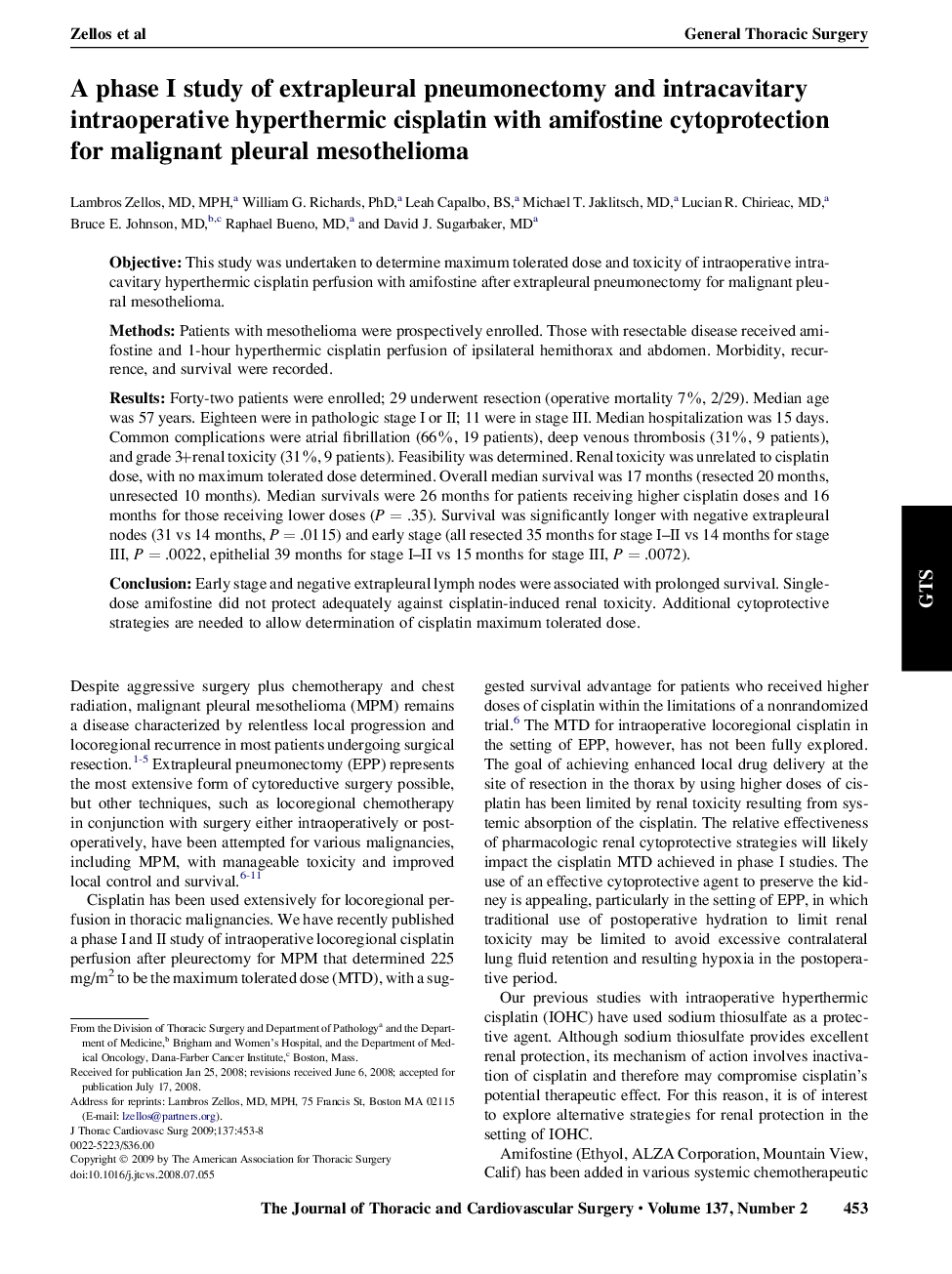| Article ID | Journal | Published Year | Pages | File Type |
|---|---|---|---|---|
| 2985759 | The Journal of Thoracic and Cardiovascular Surgery | 2009 | 6 Pages |
ObjectiveThis study was undertaken to determine maximum tolerated dose and toxicity of intraoperative intracavitary hyperthermic cisplatin perfusion with amifostine after extrapleural pneumonectomy for malignant pleural mesothelioma.MethodsPatients with mesothelioma were prospectively enrolled. Those with resectable disease received amifostine and 1-hour hyperthermic cisplatin perfusion of ipsilateral hemithorax and abdomen. Morbidity, recurrence, and survival were recorded.ResultsForty-two patients were enrolled; 29 underwent resection (operative mortality 7%, 2/29). Median age was 57 years. Eighteen were in pathologic stage I or II; 11 were in stage III. Median hospitalization was 15 days. Common complications were atrial fibrillation (66%, 19 patients), deep venous thrombosis (31%, 9 patients), and grade 3+ renal toxicity (31%, 9 patients). Feasibility was determined. Renal toxicity was unrelated to cisplatin dose, with no maximum tolerated dose determined. Overall median survival was 17 months (resected 20 months, unresected 10 months). Median survivals were 26 months for patients receiving higher cisplatin doses and 16 months for those receiving lower doses (P = .35). Survival was significantly longer with negative extrapleural nodes (31 vs 14 months, P = .0115) and early stage (all resected 35 months for stage I–II vs 14 months for stage III, P = .0022, epithelial 39 months for stage I–II vs 15 months for stage III, P = .0072).ConclusionEarly stage and negative extrapleural lymph nodes were associated with prolonged survival. Single-dose amifostine did not protect adequately against cisplatin-induced renal toxicity. Additional cytoprotective strategies are needed to allow determination of cisplatin maximum tolerated dose.
